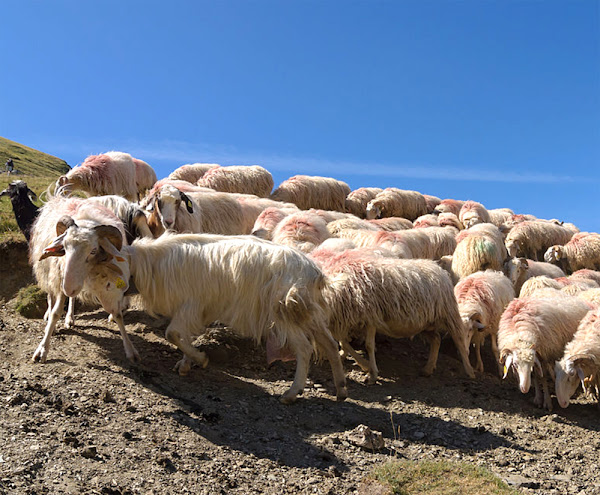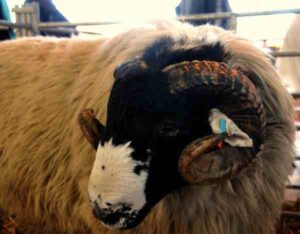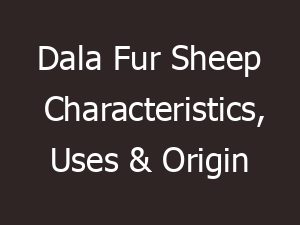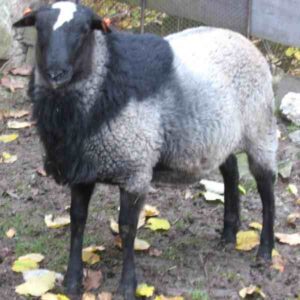The Basco-béarnaise sheep is a breed of domestic sheep from France. It was originated from the Basque country, and also known as Vasca Carranzana.
It was actually developed during the 1960s from the Basque and Béarnaise sheep. It was developed mainly for milk production purpose.
Basco-béarnaise sheep actually developed from a family of sheep breeds from the Pyrénées with falling wool.
The breed arose in the béarnaise part of the Pyrénées. It has long been flocked across the Girondine plain to the Pyrénéan mountain pastures.
Today the breed is raised mainly for milk production. However, read some more information about this French sheep breed below.
Basco-béarnaise Sheep Characteristics
The Basco-béarnaise sheep are medium to large sized animals. They are mainly white in coloration and have long, white and hanging wool.
Their head and hooves are reddish-yellow colored. The rams have spiral horn around the ear. And the ewes can be either horned or polled.
Average body height of the mature Basco-béarnaise rams is around 35 inches at the withers, and around 30 inches for the ewes.
Average live body weight of the mature rams is around 80 kg. And average live body weight of the mature ewes is around 55 kg. Photo and info from Wikipedia.

Uses
The Basco-béarnaise sheep is a milk sheep breed. It is raised mainly for milk production.
Special Notes
The Basco-béarnaise sheep are very hardy animals, and they are well adapted to their native climates.
They mainly raised as a milk breed, and an ewe on average produces around 120 liters of milk per lactation.
And their lactation period is around of 130 days. Their milk is of good quality containing around 5.39 percent protein and around 7.42 percent matière grasse.
The ewes lamb in spring and produce milk in the estive, like other rural breeds. However, review full breed profile of the Basco-béarnaise sheep in the following chart.
| Breed Name | Basco-béarnaise |
| Other Names | Vasca Carranzana |
| Breed Purpose | Mainly milk |
| Special Notes | Well adapted to local climates, very hardy and strong animals, currently raised mainly for milk production, the ewes produce around 120 liters of milk per lactation, milk is of very good quality, the ewes lamb in spring and produce milk in the estive |
| Breed Size | Medium to large |
| Weight | Mature ram’s average body weight is around 80 kg, and the mature ewe’s average live body weight is around 55 kg. |
| Horns | Rams are horned, but the ewes can be either horned or polled |
| Climate Tolerance | Local climates |
| Color | White |
| Rarity | Common |
| Country/Place of Origin | France |






